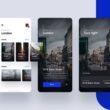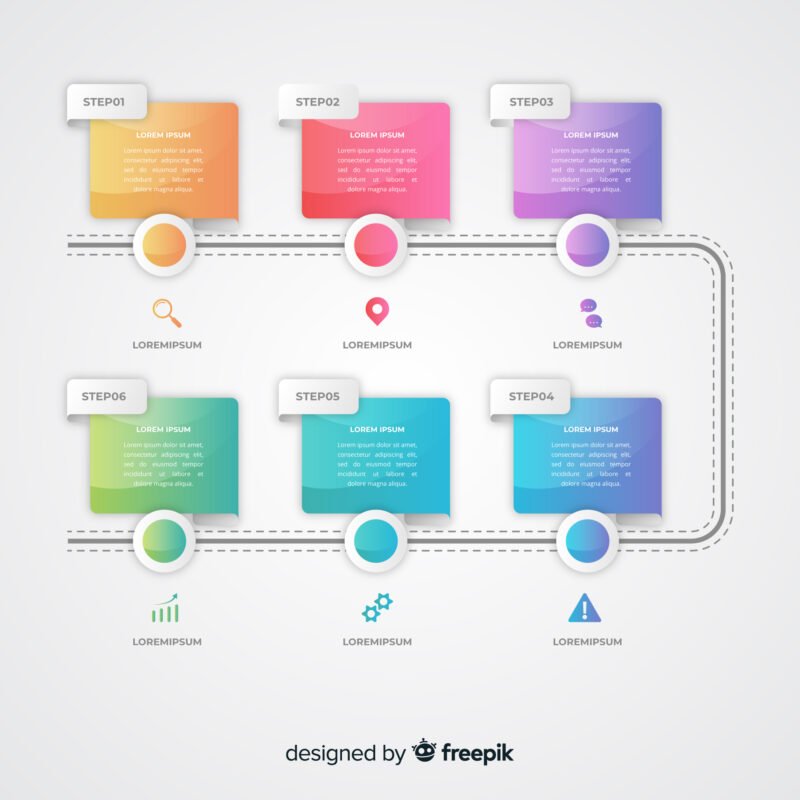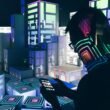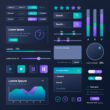Have you ever ordered food online, signed up for a newsletter, or booked a ride through an app? Chances are, you followed a simple series of steps to complete your goal. That’s exactly what a Task Flow represents—a step-by-step path a user takes to get one specific thing done.
In this article, we’re Understanding Task Flows & How to Create Them in a way that’s clear, practical, and beginner-friendly. Let’s dive in!
What is a Task Flow?
To begin with, a task flow is a visual representation of the steps a user takes to complete a single task on a digital product like a website or an app. It’s a linear process, meaning there’s one clear direction from start to finish—no extra choices or branches involved.
For instance, let’s say the task is ordering a pizza on a food delivery app. The task flow might look like this:
- Open the app
- Search for pizza
- Select a restaurant
- Choose your pizza
- Add it to cart
- Check out and pay
Simple, right? That’s the power of task flows—they remove the clutter and focus only on the essential steps.
How is a Task Flow Different from a User Flow?
At this point, you might be wondering, “Isn’t this the same as a user flow?” Not quite! While they are similar, the key difference lies in complexity and purpose.
Here’s a quick comparison:
| Feature | Task Flow | User Flow |
|---|---|---|
| Focus | One specific task | Multiple paths and decisions |
| Structure | Simple and linear | Complex with branches |
| User Choices | None | Yes, includes decision points |
| Example | Ordering pizza | Browsing different foods, comparing prices, then ordering |
In short, if a task flow is a straight line, then a user flow is a decision tree.
Why Are Task Flows Important?
Now that you know what a task flow is, let’s explore why it matters, especially in the early stages of product design.
Task flows help designers and product teams to:
Understand the user’s journey clearly
Identify pain points early
Remove unnecessary steps
Test usability before design begins
Improve overall user experience
Since task flows don’t include visuals or design elements, they make it easier to focus solely on what the user is doing, not how the interface looks. This allows teams to troubleshoot the action flow before investing in design or development.
Think of it like sketching a map before building a road.
How to Create a Task Flow (Step-by-Step)
So, how do you create one? Fortunately, building a task flow is easy—even for beginners! Follow these simple steps:
1. Define the User’s Goal
Start with a clear task that the user wants to complete. Example: Sign up for a newsletter.
2. Identify the Starting Point
Where does the user begin the journey? Perhaps the homepage or a social media ad.
3. List Every Step
Map out each user action from beginning to end, such as clicking a button, entering information, or confirming a submission.
4. Keep it Linear
Focus on just one clear path—no decision branches or alternate routes.
5. Visualize It
Use basic shapes (boxes for actions, arrows for flow) to draw it out like a flowchart.
Example:
Task: Subscribing to a newsletter
Task Flow:
Homepage → Click “Subscribe” → Enter email → Click “Submit” → View confirmation message
That’s it—you’ve created your first task flow! ✅
Using Real-Life Scenarios
When you’re unsure what task to build a flow for, start with common user actions. Think about what people do every day, like:
- Resetting a password
- Uploading a profile picture
- Placing a delivery order
These are perfect starting points for Understanding Task Flows & How to Create Them in real-world products.
Final Takeaway
Understanding Task Flows & How to Create Them is a valuable skill for any designer, developer, or product thinker. It helps you stay focused on what truly matters—making the user’s journey as smooth and simple as possible.
Whether it’s a five-step checkout or a three-click signup process, task flows give you clarity and direction. So next time you plan a new feature or app screen, don’t jump into the design—map the task flow first











1 comment